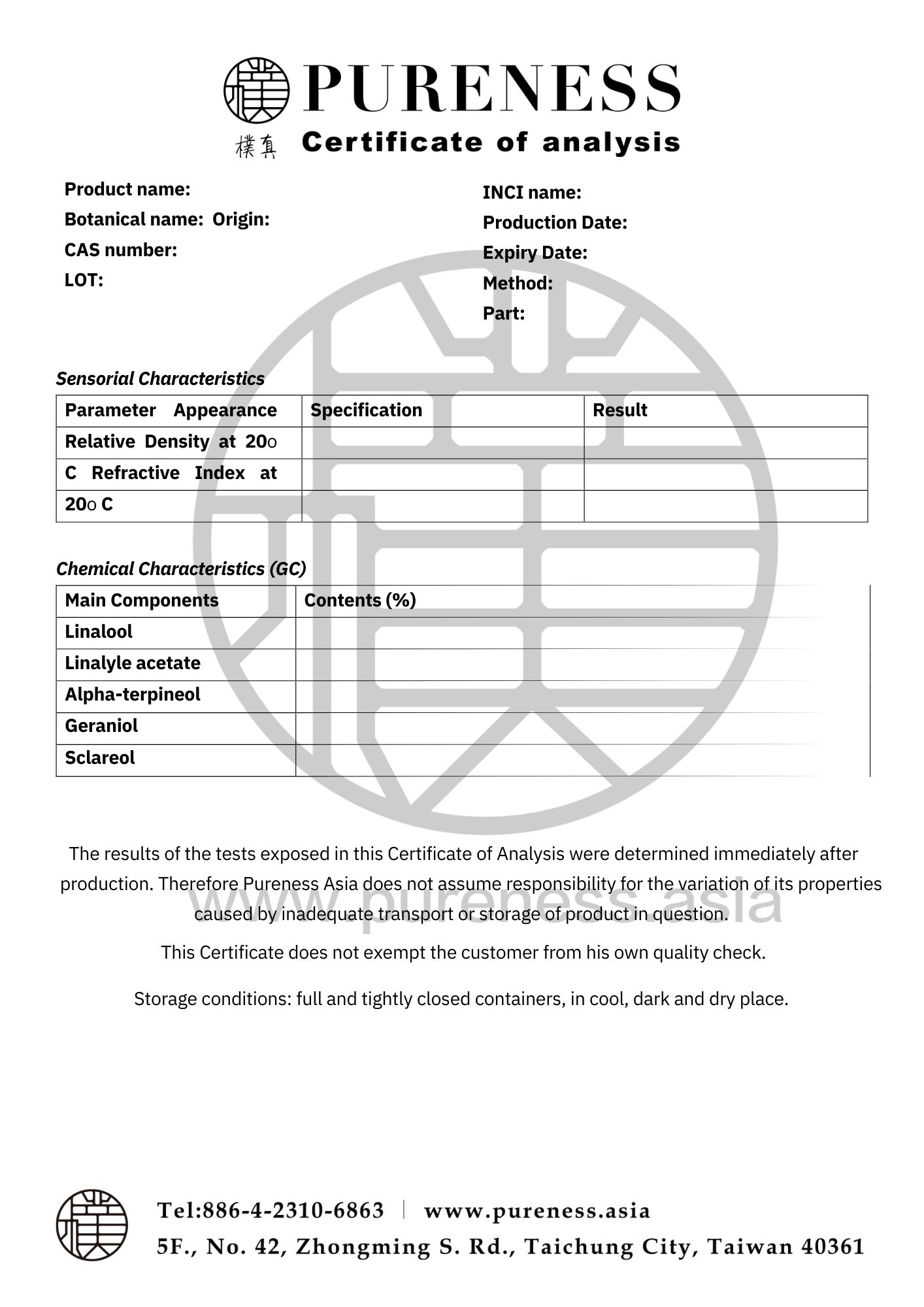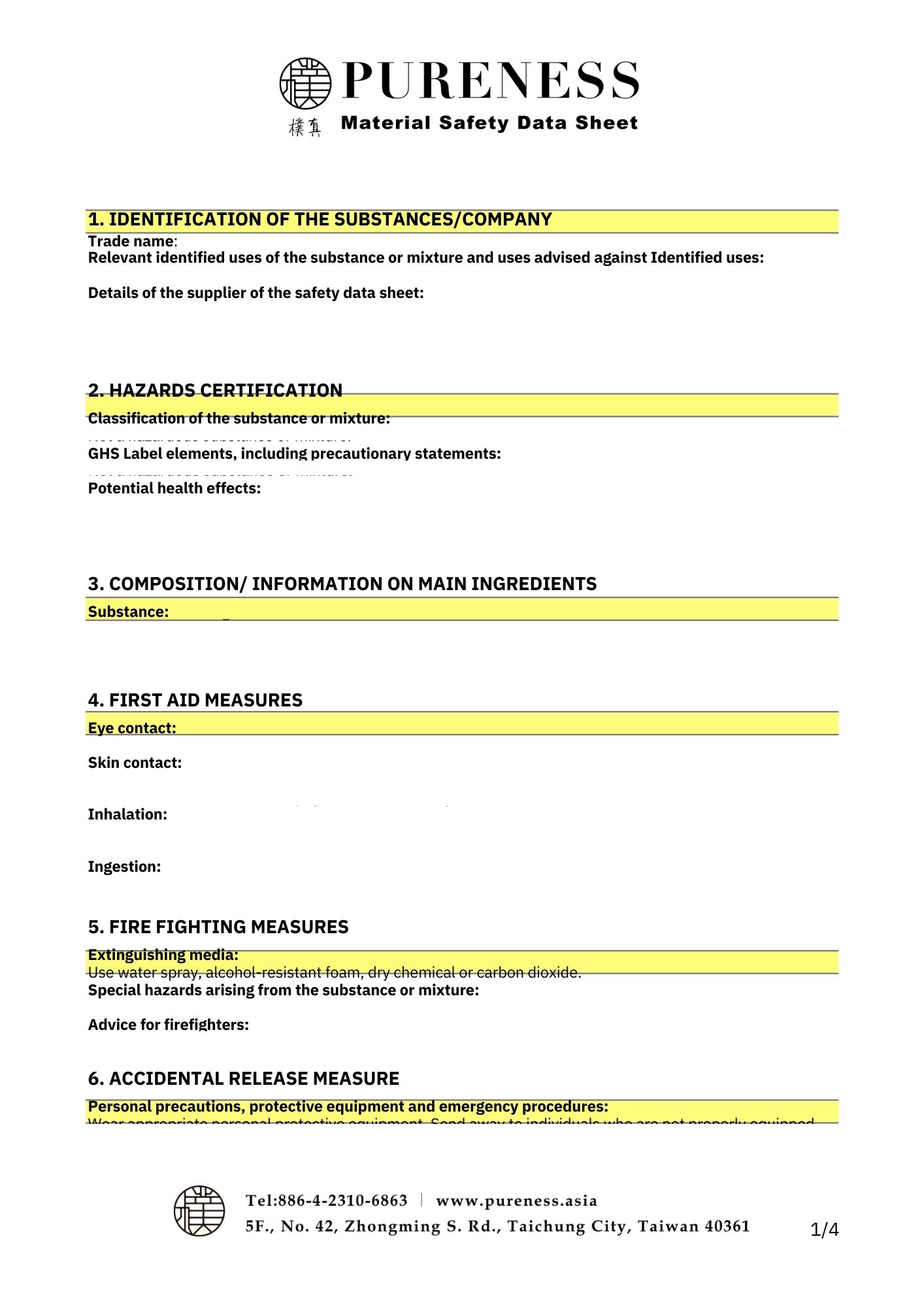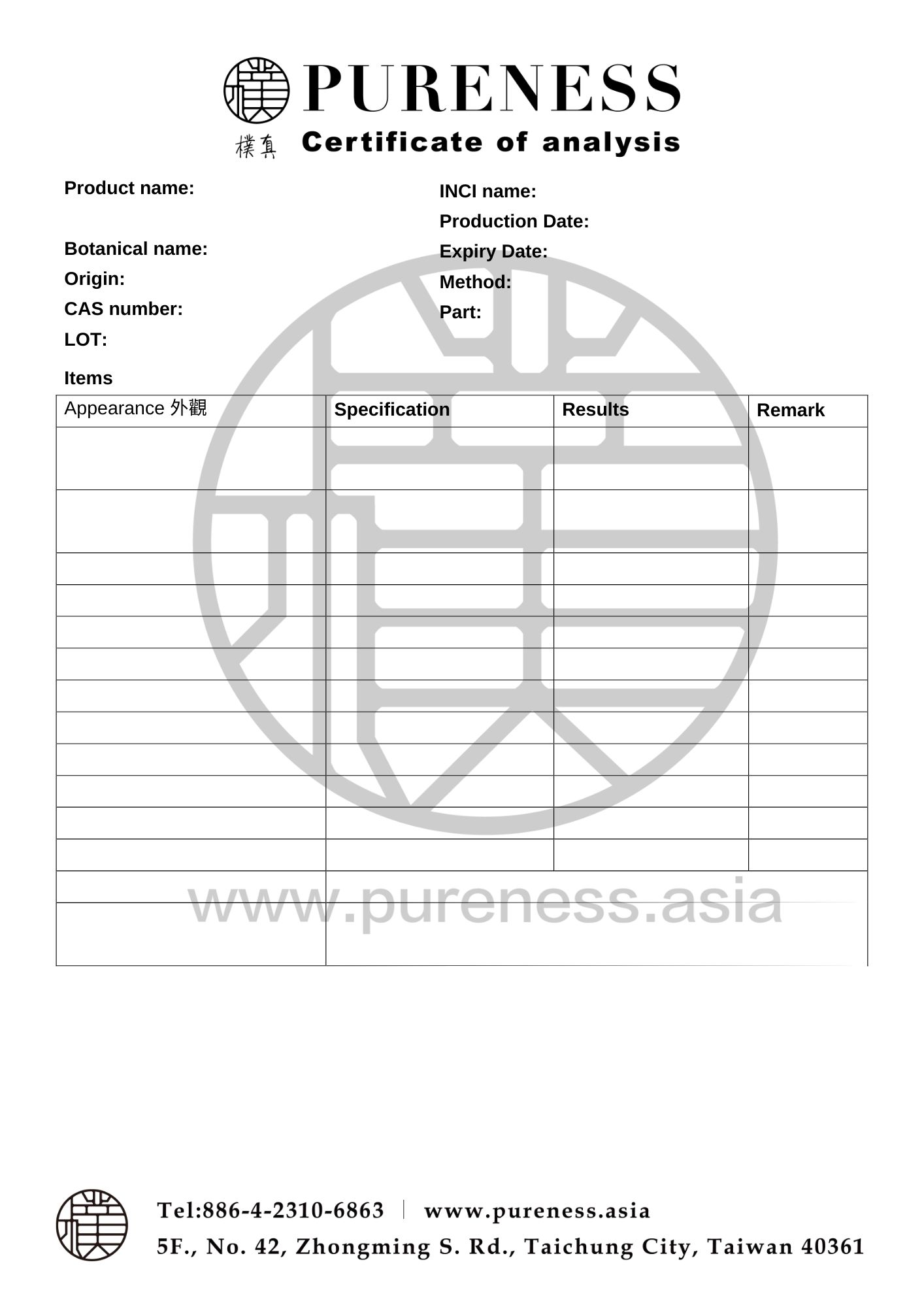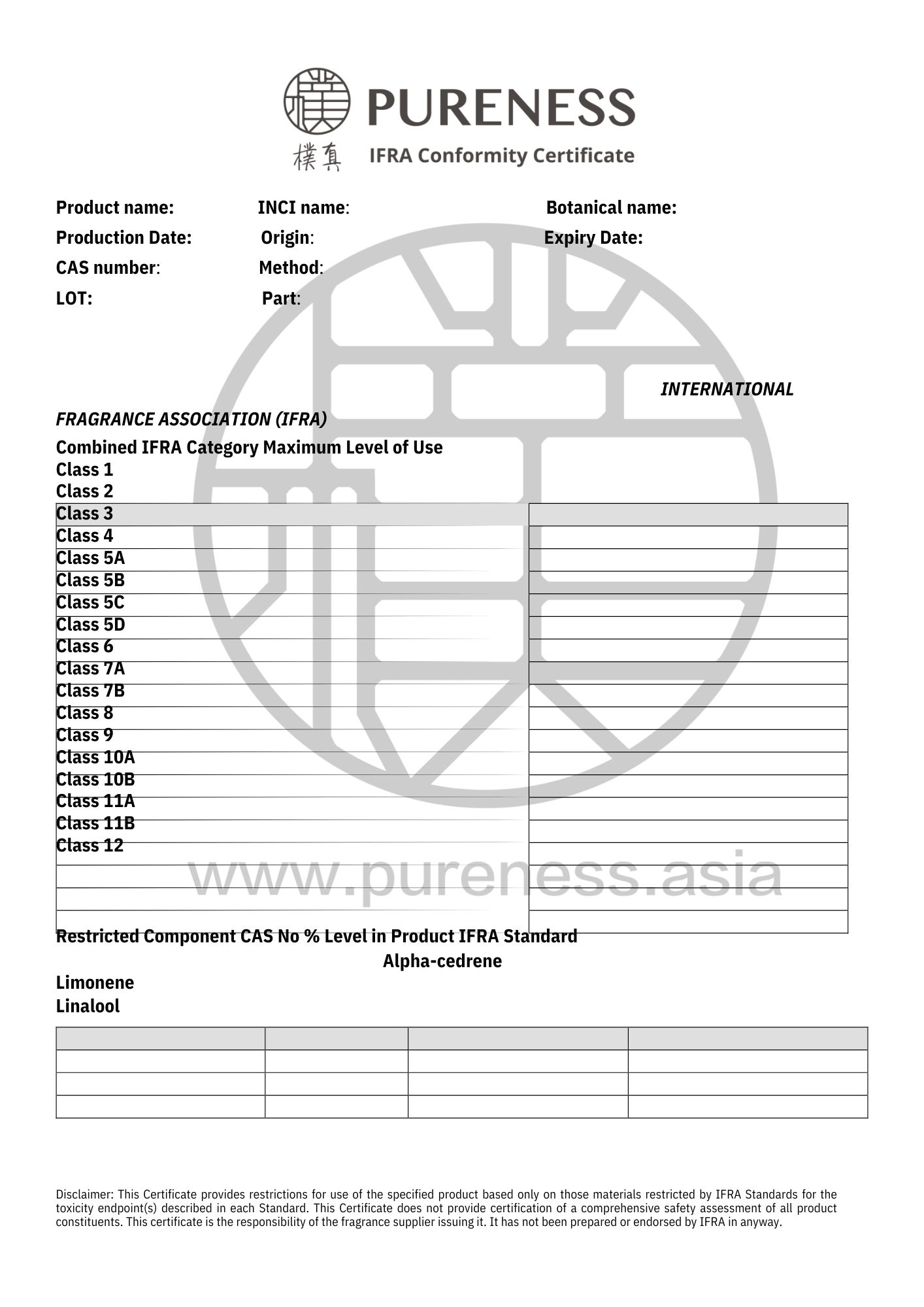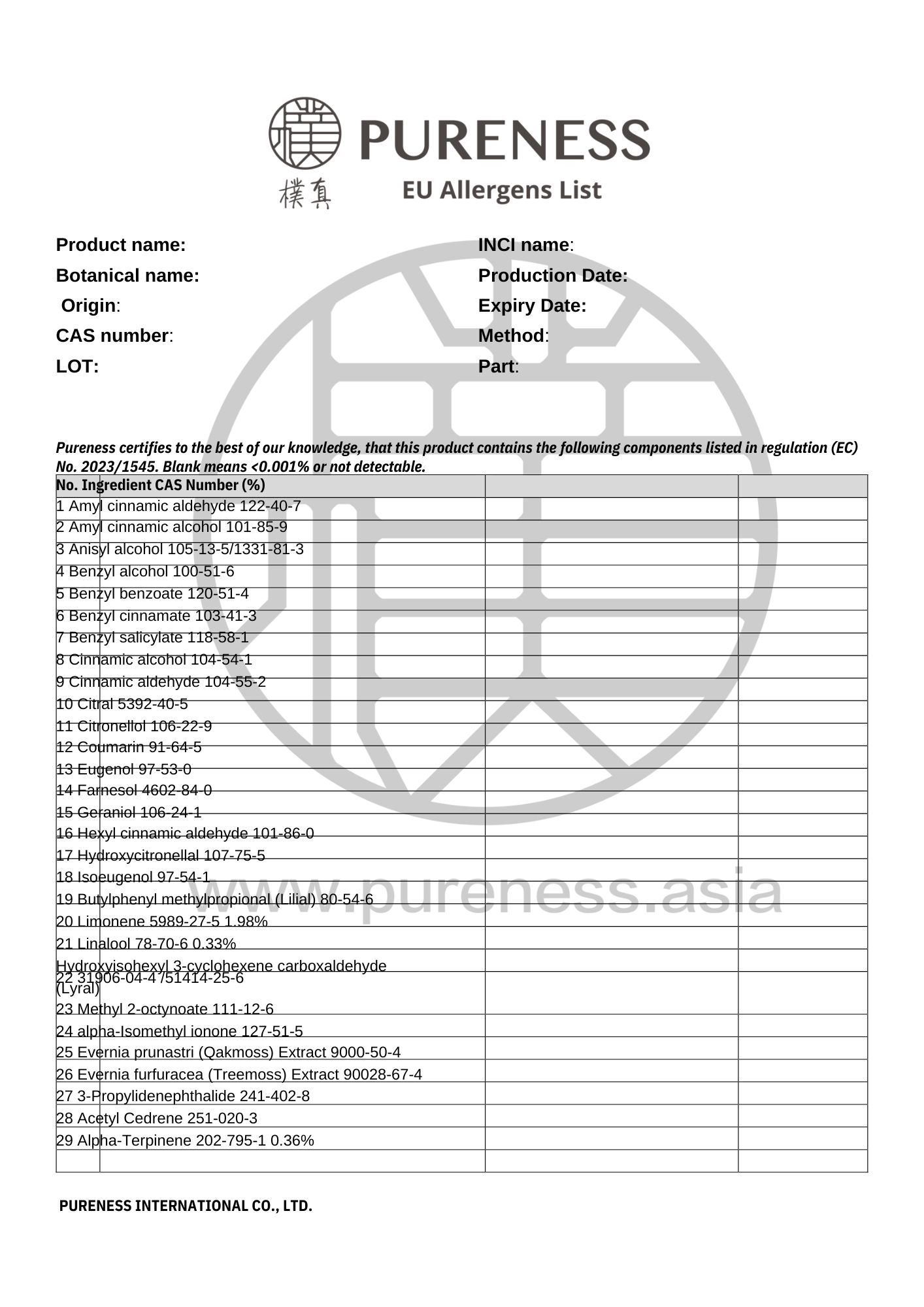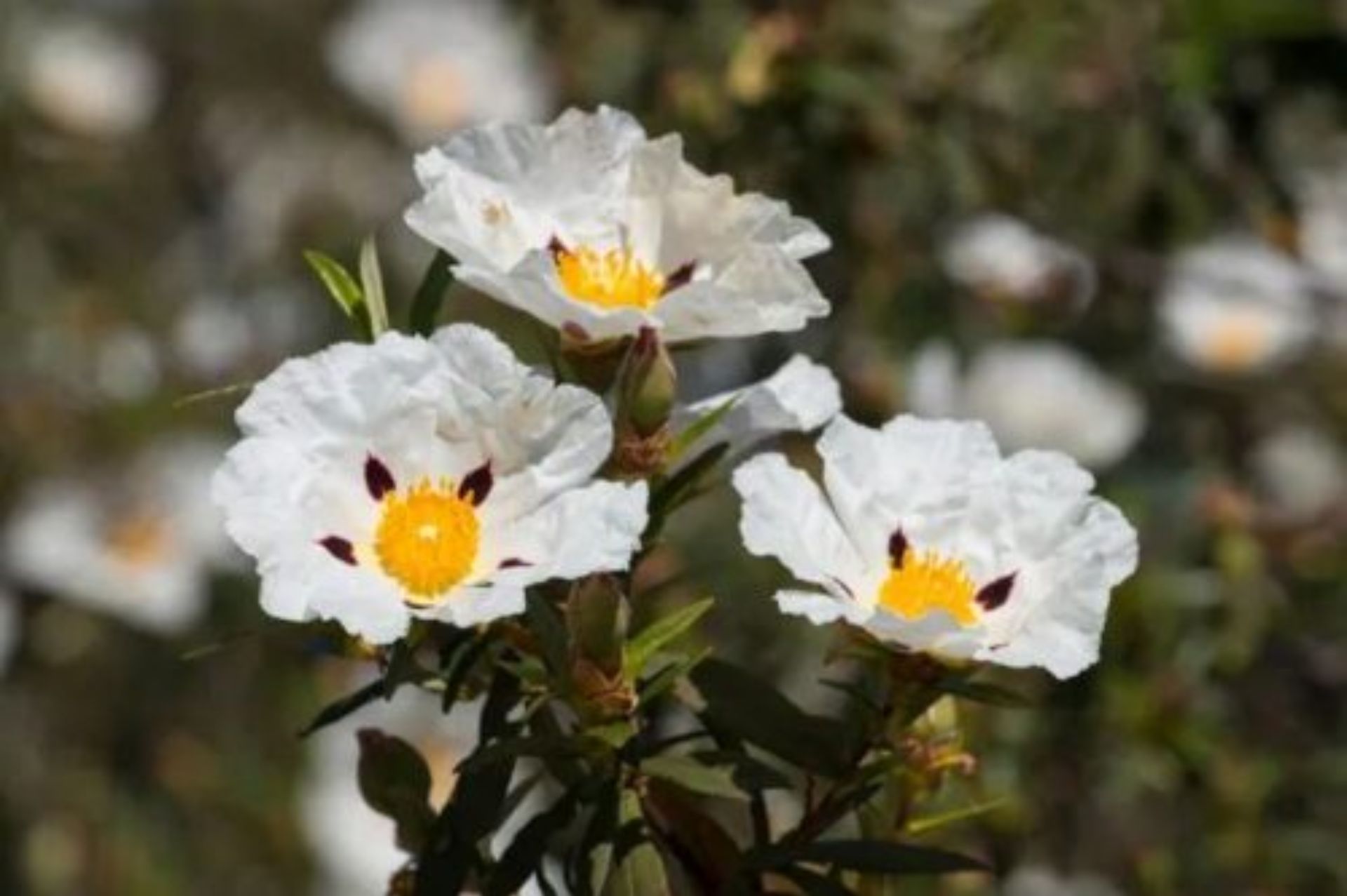
Cistus
Scientific name|Cistus ladaniferus
Origin|Spain
Classification|Resin series
Specifications|500g-25kg Please contact sales for details
Extraction part|Leaves
Extraction method | Distillation
Plant family|Cistaceae
Aroma|Unique sweet woody and musky scent
▎Essential Oil Introduction
Preferred sources are from the Andalusia region in southern Spain, with its southern coastline along the Mediterranean Sea, western border along the Atlantic Ocean, and facing Morocco in North Africa, this area experiences the hot and dry summers typical of Spain, making it highly conducive to plant growth.
Cistus originated in Spain and are now cultivated in Portugal, France, Sicily, Greece (Crete), Algeria, Morocco, and Cyprus. Wild Cistus are increasingly found throughout the entire Mediterranean region, thriving in well-drained sandy soils.
The Mediterranean region's long, sunny summers and arid conditions, along with cold winters sweeping down from the north, have fostered the Cistus' robust self-healing abilities. Its abundant aromatic resin easily heals broken branches. The essential oil are distilled from the leaves or extracted from the gummy resin exuded from the leaves.
▎Component Analysis
|Main Component: Monoterpenes, Monoterpenols, Diterpenols (Labdanol)
The main constituents include α-pinene (up to 55% content), camphene, bornyl acetate, himbaccol, sabinene, p-cymene, and many others.
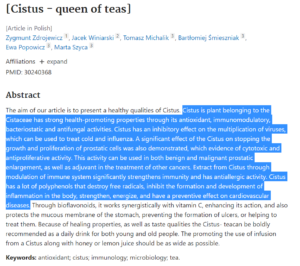
▸ Cistus contains many polyphenols that can destroy free radicals and has been studied in regulating inflammation in the body and cardiovascular health.
|Component 1: α-piene

▸ α-Pinene is one of the most widely distributed terpenes in nature.

▸ Reference:
U. Neuenschwander, Mechanism of the AerobicOxidation of α-Pinene, ChemSusChem. 2010, 3 (1): pp. 75–84.
|Component 2: Camphene

▸ It can be used to prepare spices or as a food seasoning additive.
|Component 3: Bornyl acetate
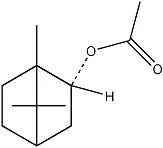
▸ It can be isolated from essential oils or made by acetylation of L-borneol with acetic anhydride.
|Component 4: Himbaccol
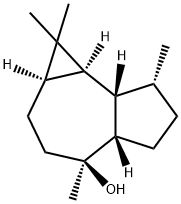
▸ Chemical structure of Himbaccol.
|Raw Material Certifications
To obtain relevant certification information, please contact us on WhatsApp.
▎References
- Zygmunt Zdrojewicz et al. [Cistus - queenof teas] Pol Merkur Lekarski. 2018. Aug 29;45(266):53-56.
- El Kabbaoui M, Chda A, El-Akhal J, Azdad O,Mejrhit N, Aarab L, Bencheikh R, Tazi A. Acute and sub-chronic toxicity studiesof the aqueous extract from leaves of Cistus ladaniferus L. inmice and rats. J Ethnopharmacol. 2017 Sep 14;209:147-156.
- Guinoiseau E, et al. Susceptibility of themulti-drug resistant strain of Enterobacter aerogenes EA289 to the terpenealcohols from Cistus ladaniferus essential oil. Nat Prod Commun.2011 Aug;6(8):1159-62.
- U. Neuenschwander, Mechanism of the AerobicOxidation of α-Pinene, ChemSusChem. 2010, 3 (1): pp. 75–84
- Amensour M, Sendra E, Pérez-Alvarez JA,Skali-Senhaji N, Abrini J, Fernández-López J. Antioxidant activity and chemicalcontent of methanol and ethanol extracts from leaves of rockrose (Cistus ladaniferus).Plant Foods Hum Nutr. 2010 Jun;65(2):170-8.
- Belmokhtar M, et al. Antihypertensive andendothelium-dependent vasodilator effects of aqueous extractof Cistus ladaniferus. Biochem Biophys Res Commun. 2009 Nov6;389(1):145-9.
- Aziz M, et al. Relaxant effect of aqueousextract of Cistus ladaniferus on rodent intestinal contractions.Fitoterapia. 2006 Sep;77(6):425-8.
- Regulatory mechanism of food factors in bonemetabolism and prevention of osteoporosis.Yamaguchi M. Yakugaku Zasshi.2006 Nov;126(11):1117-37.
- Nagai T, et al. Antioxidative ability in alinoleic acid oxidation system and scavenging abilities against active oxygenspecies of enzymatic hydrolysates from pollen Cistus ladaniferus. IntJ Mol Med. 2005 Feb;15(2):259-63.
- Mekhfi H, et al. Platelet anti-aggregant property of some Moroccanmedicinal plants. J Ethnopharmacol. 2004 Oct;94(2-3):317-22.
- [Contribution to the study of the essenceof Cistus ladaniferus]. Buenadicha P. Farmacognosia.1964;24(3):85-104.
|Some images sourced from the internet. Contact for copyright removal|
▎More Articles
- Why Malaysian Resellers Are Turning to Private Label Skincare
- Ingredient Checklist for Clean Beauty Brands in Malaysia & Singapore
- How to Source High-Quality Skincare Ingredients in Malaysia & Singapore
